Detroit's Passenger Car Sales Are Falling Way Faster Than the Overall U.S. Auto Industry's
Across the U.S. auto industry, there are a number of auto brands that are actually selling more passenger cars in 2017 than in 2016: Jaguar, Lincoln, Infiniti, Subaru, Volkswagen.
Some specific models, many with all-wheel-drive availability like the Audi A5, Subaru Impreza, and Volkswagen Golf, are enjoying far greater sales success this year than last.
But you know the story. Generally speaking, Americans are buying far fewer cars now than they used to. From more than 50 percent just five years ago, passenger car market share is down to 37 percent. Nowhere is this more obvious than at traditional domestic manufacturers, the Detroit Three.
Primed to End the Toyota Camry's 15-Year Run, Honda Does Not Mess With 2018 Civic's Recipe
George W. Bush was finishing his second year as president of the United States when Toyota reported 434,145 Camry sales in calendar year 2002. No other passenger car generated more U.S. volume that year.
Or the next year. Or the next. Or the one after that. In fact, the Toyota Camry’s reign as America’s best-selling car continued for a decade and a half, stretching from 2002 through 2016.
Unless the launch of the all-new 2018 Toyota Camry results in a superior final third of 2017, however, Toyota’s tenure atop the leaderboard will end this year. Ahead of the Camry by 1,153 sales through the first eight months of 2017 is the Honda Civic.
With 2018 Civics arriving in Honda showrooms on October 3, 2017, Honda is determined to leave well enough alone. The recipe is unchanged. Honda will not mess with success.
Time to Go Global? GM Australia's Holden Special Vehicles Building Right-hand-drive Chevrolet Camaros for Sale in 2018
In response to the huge global success achieved by the sixth-generation Ford Mustang, General Motors’ Australian Holden branch is developing right-hand-drive Chevrolet Camaros for sale in 2018.
According to Australia’s News, the beleaguered Holden brand will benefit from the launch of a market-specific Camaro next year thanks to conversion work done by Holden Special Vehicles.
General Motors is no doubt privy to news that the Ford Mustang became a global hit when the sixth iteration launched with independent rear suspension and right-hand-drive availability. The Mustang arrived in the United Kingdom in late 2015, for instance, and quickly outsold all other sporting coupes, earning the bulk of its sales from V8 versions. And in Australia, where Ford originally anticipated 1,000 annual Mustang sales, the Blue Oval is running at a roughly 10,000-unit annual pace.
Selling far fewer Camaros in its home market than it used to, Chevrolet could certainly use a global boost for its high-performance coupe. But the sales boost may be modest, as Australia’s Camaro is destined to be far more costly than the Mustang.
For the First Time in 2017, September Auto Sales May Have Increased, Slightly, Perhaps
Both Edmunds and Kelley Blue Book are forecasting marginal year-over-year sales increases for the U.S. auto industry in September 2017.
If the analysts prove correct, it will be the industry’s first month of growth since December of last year. What’ll it take to push the industry beyond the 1.43 million new vehicles sold in September 2016?
The big gains from General Motors and Toyota will have to be big enough to overcome big losses from Fiat Chrysler Automobiles and Hyundai-Kia.
Mournful Glances: Carryover 2018 Ford Fiesta Loses the $995 Three-cylinder EcoBoost Engine Option
At TTAC, we’re big fans of Ford’s 1.0-liter three-cylinder EcoBoost engine. In the right application — the sixth-generation Ford Fiesta — the EcoBoost triple is a happy revver, a fuel miser, a torque manufacturer, a smooth operator.
In fact, we’re such big fans of the EcoBoost three-cylinder that our editor-at-large bought and paid for a Fiesta 1.0 EB long-termer with his own money. That’s a strong recommendation. Recommendations don’t come any stronger than that.
With the existing, aged, increasingly antiquated Mexico-built Ford Fiesta continuing as a 2018 model year subcompact whilst much of the world benefits from the launch of a new generation of Fiestas, Ford is trimming the Fiesta lineup. The standard 1.6-liter four-cylinder persists; the Fiesta ST forges on.
But the Ford Fiesta’s 1.0-liter EcoBoost three-cylinder is signing off.
Jaguar Is Committed to Its Increasingly Popular Diesels in America, but the Marketing Plan Is Quiet
Jaguar’s U.S. outlets are benefiting not just from last year’s introduction of a new XE entry-level sedan and the brand’s top-selling F-Pace SUV but also the broad availability of diesel powerplants.
In the shadows of Volkswagen’s diesel emissions scandal that broke in late 2015, Jaguar began offering diesel engines in the United States for the first time in 2016. Through the first eight months of 2017, 13 percent of the vehicles sold by the Jaguar brand in America were powered by the company’s 2.0-liter turbodiesel.
It’s not surprising then that Jaguar told TTAC’s own Adam Tonge at the North American unveiling of the new E-Pace crossover that diesel will continue to be a focus for Jaguar Land Rover in the United States. The company sees a niche for diesel vehicles in the premium space, particularly now with the complete absence of Mercedes-Benz, Audi, and Porsche in the sphere.
And yet you won’t really be hearing about Jaguar’s diesel offerings.
We Still Don't Know When the Mazda CX-5 Diesel Will Arrive in America
The potential for success is limited, but Mazda nevertheless announced in Los Angeles in November 2016 that the revamped 2017 Mazda CX-5 would be available with a 2.2-liter diesel torque monster.
Diesel? 2017? The Volkswagen diesel emissions scandal that broke in late 2015 ended diesel’s run at Volkswagen of America and eventually ended with the withdrawal of diesel engines in Mercedes-Benz USA’s lineup, as well.
Yet diesel persists. General Motors, for example, is selling diesel variants of the Chevrolet Cruze and Equinox and the Equinox’s GMC Terrain sibling. And with Mazda’s decision to sell a 310-lb-ft diesel CX-5, compact crossover shoppers would have three choices.
Mazda said last year that “it will offer the Skyactiv-D 2.2 clean diesel engine in the all-new Mazda CX-5 for North America from the second half of 2017.”
Only half of the second half remains, and MazdaUSA.com still lists the 2017 CX-5 Diesel as a future vehicle. So where’s the 2017 Mazda CX-5 Diesel we were promised?
GM Cuts Third Shift at Spring Hill Plant, but Not Because the Cadillac XT5 and GMC Acadia Are Tanking
Layoffs at an assembly plant producing recently redesigned midsize crossovers? Seems an unlikely scenario. But that’s what General Motors is doing in Spring Hill, Tennessee, where the automaker builds the Cadillac XT5 and GMC Acadia.
GM has announced it is cutting the plant’s third shift for an undetermined length of time starting in late November. The move comes just eight months after Spring Hill added hundreds of workers for that very same shift. While it might appear that demand for the vehicles is drying up, the numbers tell another story.
2018 Nissan Altima Prices Rise Slightly as Nissan Adds Equipment, Prepares a 2019 Challenger for Camry and Accord
Bolstered in its fight against all-new editions of key rivals from Toyota and Honda with the standard fitment of automatic emergency braking and forward collision warning, the 2018 Nissan Altima’s price rises by only $240 compared with the outgoing model.
The base 2018 Nissan Altima 2.5 S rises a few ticks above $24K to $24,025, including destination and handling charges. The Altima continues with a 179-horsepower 2.5-liter four-cylinder linked to a continuously variable transmission.
Given the era in which we live, it’s not surprising to see a more significant price increase for the lone remaining V6 model — the sportier 3.5 SR is dead.
The Infiniti QX50 Goes on Hiatus While Infiniti Kills Off the QX60 Hybrid
As Infiniti prepares to launch the replacement for the Infiniti QX50 next year, quite likely fitted with a unique new turbocharged engine with continuously altered cylinder compression ratios, the first-generation Infiniti QX50 takes a breather for the 2018 model year.
It may not be a well-deserved break — the QX50, formerly known as the EX35 and EX37, accomplished little for the Infiniti brand in America — but it’s a long overdue pause on Infiniti’s compact crossover.
It’s an odd duck, the QX50. Essentially a fast but outdated wagon, frequently sold in rear-wheel-drive form, the QX50 is still widely available prior to its relaunch for MY2019. The Infiniti QX60 Hybrid, on the other hand, is was the fuel-efficient version of Infiniti’s most popular product. At the end of the 2017 model year, the QX60 Hybrid is dead, Motor Authority reports.
Hold on, Minivan Enthusiasts - Don't Hoon That Chrysler Pacifica Just Yet
We all know minivans bring out a driver’s inner beast. Here at TTAC, hardly a day goes by where we’re not discussing which minivan is best suited for an impromptu spin around the track. Seriously.
However, if exploring the limits of your minivan’s handling abilities tops your short list of things to do today, Chrysler Pacifica drivers had best hold off — at least if you’ve got a crowded backseat. Fiat Chrysler Automobiles doesn’t want owners driving aggressively until they’ve taken their van in for a voluntary recall.
Remember How Silly You Thought It Was When Lexus Predicted 400 LC Sales Per Month in America?
Lexus has high hopes for the LC, we told you in March. Not yet on sale at that point, Lexus was entirely transparent about the company’s belief that it could sell 400 copies of the LC500 and hybridized LC500h every month in America.
“That’s a big number,” I wrote six months ago, expressing a measure of doubt. But Lexus was insistent, based on “tremendous response to the LF-LC show car” from 2012, a successful carryover to production of concept car design, and “positive feedback in customer clinics.”
Doubt was expressed by most commenters, as well. “Good luck with that,” Master Baiter told Lexus. “Lexus, you need help,” said thats one fast cat. “Setting a goal like this is just setting Lexus up for the unnecessary perception of failure,” dal20402 wrote. “Dumb move.” badhobz said, “I don’t think it’ll do that well.”
It’s been half a year. It’s time for the Lexus LC to stand up and be counted.
These 16 Cars Are Bucking America's Anti-Car Trend in 2017
Through the first eight months of 2017, consumers across America have acquired 12 percent fewer new passenger cars than during the first eight months of 2016.
That’s a drop of 565,000 sales, a rate of decline that stands in stark contrast to the U.S. auto industry’s 4-percent year-over-year light truck improvement. Cars now account for just 37 percent of all auto sales, down from more than 50 percent as recently as 2012. But it’s not all doom and gloom. Some auto brands are selling more cars this year than last, and a wide variety of cars are accelerating their sales pace. Subaru, for example, has already sold 17,981 more Imprezas in 2017 than in the same period of 2016.
So we’ve compiled a list of every passenger car that’s making meaningful headway in America’s anti-car market — the cars that are selling more and more often even as many of their competitors suffer under the weight of a pro-F150, pro-RAV4, pro-Escalade ESV wave.
The list is not very long.
Put Those Next-Gen Ford Fiesta ST Dreams to Bed, America - It's Not Happening
Over the last seven years, America, you didn’t buy many Ford Fiestas. Fewer than 430,000, in fact. For perspective, in the much smaller United Kingdom market, Ford sold over 500,000 Fiestas in just the last four years.
But the Fiesta’s lack of popularity — and its dramatic loss of popularity in America — is not a unique-to-Ford situation. U.S. sales of subcompact cars plunged by more than a fifth, year-over-year, during the first eight months of 2017. That tumble comes after U.S. sales of subcompact cars declined in 2015 and 2016, as well.
Nevertheless, it comes as no surprise that Ford, after exploring America’s affordable avenues for one generation of Fiesta, isn’t bringing the seventh-generation version to America. And now we have confirmation that there is absolutely no hope the next-gen Ford Fiesta ST will come stateside, either.
American Honda Believes Sales of the New Honda Accord Won't Fall, Sinks $267 Million Into Ohio Plant
American Honda’s vice president for sales, Ray Mikiciuk, won’t provide a firm forecast for sales of the 10th-generation Honda Accord. But as far as next year goes, “I don’t expect to sell fewer Accords in 2018 with this great new product,” Mikiciuk tells CNBC.
With belief in the company’s new product, Honda has invested $267 million into its Marysville, Ohio, plant where the Accord, Acura TLX, and Acura ILX are assembled. With 300 additional employees, American Honda is following the lead of Toyota’s all-new 2018 Camry.
At the Camry’s Georgetown, Kentucky, assembly plant, production of the new TNGA-based Camry required Toyota to build up its employee count to the highest level ever. That’s certainly not the way rivals are approaching America’s midsize segment. You’ll recall that General Motors cut Chevrolet Malibu production — and consequently, jobs — in Kansas City earlier this summer. Prior to the new Camry’s launch this summer, the Malibu was the freshest midsize sedan on the block, yet Malibu sales have plunged by more than a fifth in 2017.
Ohio production of the 2018 Honda Accord began yesterday, September 18th. But what do Honda’s vague sales forecasts mean in the broader American midsize segment?
More market share.
Mazda Plans U.S. Dealer Network Makeover, Still Wants 2-percent Market Share (and More CX-5s)
“We have been working more closely with our dealers to evolve their businesses and through that process,” Mazda tells Automotive News, “some new dealers have chosen to begin working with us, while others have made the decision to leave the Mazda brand.”
Mazda has been open about its goal of earning 2 percent of the U.S. market while being forthright about the brand’s intentions to do so only on solid ground. This means fewer discounts, a premium vibe, and the kind of higher margins that make dealers happy.
On the dealer side of the equation, Mazda now wants those dealers to improve. In some cases, that means a new location. In others, a new exterior design is necessary. More thoroughly trained staff members is key, as well. But it’ll be slow going. Of Mazda’s roughly 600 dealers, the brand acknowledges that some have forsaken the automaker, though Mazda won’t say how many. Since the efforts to revamp dealers began last year, only 26 have been upgraded so far. By the end of the decade, Mazda believes roughly one-sixth of its network will have undergone a remodel.
In the meantime, Mazda is getting further away from reaching its 2-percent goal.
The Pressure's On: Hyundai Motor America's Newly Minted CEO Needs to Turn It Around
After Hyundai’s American division canned former CEO David Zuchowski for failing to meet internal sales targets last December, it’s no mystery what Job One is for the new guy.
Kyung Soo Lee, a 61-year-old veteran of the company who started his career back in 1982, takes the helm of a troubled ship next week, Hyundai announced Thursday. As president and CEO, Lee (Kenny to his friends) is responsible for reversing a dismal sales trend that sunk his predecessor, as well as the company’s U.S. fortunes.
Porsche Is Mulling a Cayenne Coupe Because the BMW X6 and Mercedes-Benz GLE Coupe Are Kings of the World
On this, TTAC’s authors and TTAC’s audience are largely in agreement: luxury sport utility coupes are not the answer to the vehicular challenges of this age.
So Porsche is probably going to build a Cayenne Coupe.
It’ll probably have four doors. It’ll probably be more expensive than a regular Cayenne. It will almost certainly not be as good or half as attractive as a Porsche Cayenne.
New Car Dealerships Are Taking a Page From the Buy-here/Pay-here Playbook and Giving It an Evil Twist
Is there any lower form of life in the automotive biosphere than the buy-here-pay-here dealership operators?
It’s hard to see them as anything other than rent-seeking scumbags who inflate the market for inexpensive used cars, then turn around and sell those used cars to the poorest and most unfortunate members of our society for prices that are often multiples of the acquisition cost. There is literally no ethical reason for them to exist; most of the time the “down payment” charged by these dealers is more or less the true value of the car. Everything that comes afterwards is just tasty cake topping — and if the working mother or fixed-income older person buying from them misses the very last weekly payment, they can repossess the car and sell it all over again on the same ridiculous terms.
In a world without buy-here-pay-here dealers, the transaction prices of low-cost cars would eventually settle to the point where they could be bought for the “down payments” being handed over today. In fact, I’ve heard BHPH operators brag about making money on the down payment alone. The difference between one of these people and the victims of their operations, of course, is that the former has access to capital and an entry into the protected world of auto auctions.
You’ll often hear these dealers tell stories about how they “help their community.” The members of the community, of course, know better. They can see the BHPH dealers living high on the hog many miles away from the low-income areas in which the lots are deliberately placed right next to liquor stores and lottery ticket providers. So it’s no wonder they feel no sense of loyalty to their “dealers” and will often make the cars disappear without further payment if they can. To combat this, the BHPH people will often have remotely-operated ignition blocks installed into their vehicles. If you don’t make the payment, or if the dealer fails to record the payment correctly, your car is shut off — regardless of where you are or what you need to do with the car next. If you don’t deal with the bottom feeders of the auto biz, you’ve probably never seen one.
That might be about to change.
Toyota Expects Lexus LS Sedan Sales to Take Off Again, but Not Nearly to Historic Levels
Timing is tough.
Toyota’s Lexus luxury marque launched the fourth-generation Lexus LS for the 2007 model year, just prior to an economic collapse that was followed up by an anti-car/pro-SUV shift. Lexus, which averaged more than 25,000 annual U.S. sales of its LS flagship sedan during its third generation and then topped 35,000 sales in 2007, suddenly found itself struggling to top the 10K marker.
As the fourth-gen LS’s tenure came to an end, Lexus watched as demand for the LS quickly collapsed. From fewer than 11,000 sales in 2013 and fewer than 9,000 in 2014 to barely more than 7,000 in 2015 and only 5,514 in 2016, the once hugely successful Lexus LS — a former leader of America’s large luxury sedan class and the car that was responsible for the genesis of Lexus — became an afterthought.
The fifth-generation Lexus LS is set to go on sale this winter, and Lexus expects to see a huge increase in demand for the new car in 2018. Lexus does not, however, expect the LS to generate anything like the kind of interest the big sedan did prior to the proverbial global financial crisis.
$31,425 2018 Volkswagen Atlas 2.0T's Fuel Economy Basically Matches Smaller VW Tiguan
At launch, the lone Volkswagen Atlas available in the United States was the more powerful 3.6-liter V6, a Tennessee-built $34,425 three-row crossover with 276 horsepower and 266 lb-ft of torque. All-wheel drive is an $1,800 option. The Atlas was rated at 18 miles per gallon in the city; 25 on the highway. City fuel economy for AWD models dropped by a single mpg; highway mpg fell to 23.
Now we know how much money you can save by purchasing the front-wheel-drive-only Volkswagen Atlas 2.0T, which suffers a loss of 41 horsepower but generates very nearly as much torque as the V6 (258 lb-ft) and does so 1,150-rpm closer to idle.
Not surprisingly, a small, modern, turbocharged engine is barely more efficient than the larger, naturally aspirated V6.
Midsize Sedan Deathwatch #15: Toyota Camry Proves to Be a Killer In August 2017
The launch of the all-new 2018 Toyota Camry began in July 2017 and delivered a big boost to America’s best-selling midsize car in August 2017.
As its competitors combined for a 12-percent loss valued at nearly 16,000 fewer sales than in August 2016, Toyota Camry sales jumped 13 percent, a gain of 4,187 sales. That figure includes 6,805 new-gen Camrys imported from Japan, where the Camry’s home market factory is being relied upon while Toyota’s Georgetown, Kentucky, assembly plant gathers steam for the entirely different Toyota New Global Architecture.
With falling sales across much of the category and rising volume at the top seller, Toyota got exactly what it called for in August 2017: a huge market share increase. But did the Camry provide the rumored boost to the segment overall? Quite clearly no, not yet.
Evidence Exhibit #127 In the Case of Market V. Small Cars: Volkswagen Considering Pulling the Up City Car From Europe
The global auto industry is not a place in which small car production is as straightforward as it was a decade or two ago.
Brought closer to home, Americans are buying roughly 30-percent fewer subcompact cars now than they were just three years ago. With next to no fuel economy advantages; limited payment upside; and less refinement, power, and space, why would a car buyer choose a subcompact over a compact sibling? Most buyers don’t. In the United States, compact car sales are five times stronger than subcompact sales. August’s top three compacts (Civic, Corolla, Cruze) outsold their subcompact brethren (Fit, Yaris, Sonic) by more than seven-to-one.
Many automakers don’t even bother selling their smallest cars in North America. Mazda’s latest 2 never saw U.S. import. FCA has left the compact market, having long since left the subcompact sector to rivals. Subaru doesn’t dive below the Impreza platform. And Volkswagen stops at the Golf, leaving the subcompact Polo for more small-car-friendly countries.
But how keen on small cars are those other countries? In some instances, not keen enough. Volkswagen boss Herbert Diess tells Autocar, “Selling small cars is not easy.” And he’s clearly not just talking about F-150-loving America. “It’s a very European problem,” says Diess. As a result, the Volkswagen Up city car, a Lupo successor, may pull out of Europe in favor of emerging markets only.
Sorry, Stonic - Kia's Got All the Small Vehicles It Needs In the U.S.
If you’re an aspiring B-segment crossover owner looking for Korean value and a fresh face, but aren’t exactly enamored with the 2018 Hyundai Kona‘s looks, you’re out of luck. For now, anyways. The Kia Stonic, revealed in Europe earlier this summer, is definitely not making the boat ride to America. Well, probably definitely.
Definitely maybe.
The automaker says it has no current plans to offer the subcompact crossover — which is arguably better looking than the U.S.-bound Kona — to utility-crazed on this side of the ocean. It’s clear Kia isn’t so sure of the extent of Americans’ appetite for non-cavernous vehicles.
2018 Mazda CX-9 Gets More Expensive, With Reason, but Will Consumers Pay Up?
Mazda is increasing the base price of its CX-9 flagship by $610 for the 2018 model year.
With more standard safety kit, Mazda’s $32,460 2017 CX-9 (after delivery) now becomes the $33,070 2018 Mazda CX-9.
But can Mazda, which sells the CX-9 at a slower rate than essentially all of its competitors, operate at an even higher price point? The second-generation Mazda CX-9 was already priced at a premium: $775 more than Pilot, $835 more than Highlander, $1,210 more than Pathfinder, $1,370 more than Durango, $1,585 more than the 2018 Traverse.
Mazda doesn’t seem terribly bothered. The majority of CX-9s sold in America are already top-spec Grand Touring and Signature models, higher-margin vehicles that are helping Mazda slowly craft an image as a premium mainstream brand, buoyed along by Driver’s Choice commercials and, as we can see now, CX-9s with $33,070 base MSRPs.
Blame Brexit: The Volkswagen Golf Cabriolet Is Sunk, Likely Never to Rise Again
If it’s not Obama’s fault, then it’s probably Brexit’s.
Volkswagen’s sixth-generation Golf is destined to mark the end of the Volkswagen Golf Cabriolet run. The Mk7 Golf didn’t spawn a droptop variant and the United Kingdom’s shrinking car market has reportedly caused Volkswagen to cease development of the eighth-generation Golf’s cabriolet.
Of course, Volkswagen hasn’t sold a topless Golf in the United States since the 2002 model year, when an Mk3 Golf essentially wore the Mk4 Golf’s face. That’s a 15-year gap for topdown Golf motoring, a timespan which saw Golf Cabriolets disappear in other markets, as well. But five years after launching the Volkswagen Eos — a Golf-related convertible with a power retractable hardtop — Volkswagen brought the Golf Cabriolet back from the grave for the Mk6 generation. There was even a GTI.
With the Eos’s death, it appeared likely that the Volkswagen Golf Cabriolet would be redeveloped yet again. But with a soft UK car market — a bizarrely convertible-hungry market, by the by — since Britons voted to sever ties with the European Union, Volkswagen boss Herbert Diess told Autocar, “We wanted to do a convertible now, but with the relatively weak UK market and the uncertainty about what will happen, we had to think against it.”
So, Beetle Convertible it is.
Up Close With the Workhorse W-15, an EV Truck Headed to U.S. Driveways
As part of National Drive Electric Week, the Cincinnati-based Workhorse Group displayed their prototype W-15 EV pickup truck at the local Cincinnati event. TTAC got some more information on the future of this pickup, as well as a turn behind the wheel.
Come have a look.
Shrinking Hybrid Premiums: 2018 Lexus NX300h Gets More Equipment, Much Lower Price
The Lexus NX, set for a MY2018 refresh, is one of America’s three most popular premium brand utility vehicles, but Lexus clearly wants customers to feel even more free to choose the pricier NX hybrid.
For the 2018 model year, CarsDirect has learned that Lexus will include the full compliment of Safety System+ active safety features as standard equipment on both the NX300 (formerly known as the NX20ot) and NX300h, but the hybrid’s additional kit is accompanied by a significant $1,385 price cut.
In fact, with the additional equipment factored in, the price reduction is even more noteworthy. Pre-collision and dynamic radar cruise control were worth $900 on the 2017 Lexus NX300h, which essentially means the NX300h’s base price has been chopped by $2,285.
Perhaps Lexus isn’t content with holding the gold and bronze-medal positions on the luxury SUV/crossover sales leaderboard. Could serious price alterations be what it takes for Lexus to be the builder of America’s two best-selling luxury utility vehicles in 2018?
Nearly Half of the Vehicles Sold by Porsche in August Weren't SUVs
Porsche revealed a new, third-generation Cayenne on a new platform late last month, but the U.S. arrival of the third version of Porsche’s original SUV won’t take place until the second half of 2018.
While the new Cayenne will be sold in some markets as a MY2018 vehicle, the 2018 Cayenne on this side of the Atlantic is the outgoing Cayenne. Yes, that Cayenne, the Cayenne that’s suffering from a sharp sales decline.
In August 2017, the Cayenne’s gradual and not entirely unpredictable old-age decline was matched to a sudden downward shift from its smaller sibling, as well. Macan sales plunged 29 percent last month. Cayenne volume was down 28 percent. Jointly, the duo lost 1,003 sales, year-over-year.
You know what that means. The overwhelming majority, the lion’s share, most, nearly half, more than a third of the vehicles sold in Porsche’s U.S. showrooms in August 2017 were sports cars. Yes, Porsche still builds sports cars, rather decent ones, in fact. And in August, Porsche’s sports car sales were very healthy indeed.
Why Did General Motors Report Such a Significant August 2017 Sales Gain as the Industry Slowdown Continued?
Crossovers.
New crossovers.
New crossovers in the biggest crossover segments.
General Motors reported a 7-percent year-over-year U.S. sales improvement in August 2017 — in stark contrast to GM’s declines in four preceding months — as the U.S. auto industry reported its eighth consecutive sales decline.
Don’t thank GM’s cars, sales of which tumbled by more than a tenth. Pickup-truck sales edged up only slightly, rising less than 3 percent compared with August 2016. But crossovers — especially newly launched crossovers, especially newly launched crossovers in America’s largest utility vehicle segments — produced massive U.S. sales improvements for GM in August 2017.
How massive? Apart from the Chevrolet Equinox, Chevrolet Traverse, GMC Terrain, and GMC Acadia, General Motors’ U.S. sales were down 2 percent last month.
Seemingly Every Automotive Headline Includes Electric This or That, but What's the State of Electric Vehicle Market Share in America?
You can forget the GM EV1 and the Toyota RAV4 EV. The car that truly attempted to bring electric cars into the mainstream was the 2011 Nissan Leaf.
It didn’t. U.S. Leaf sales, never reaching any great heights, plunged after its fourth full model year, falling by more than half between 2014 and 2016.
There’s a thoroughly updated second-gen Nissan Leaf on its way, destined to hit U.S. dealers early in 2018. But during the first-gen Leaf’s tenure, the Nissan was joined by a broad array of electric cars, from a handful of Teslas to the Chevrolet Bolt, Volkswagen e-Golf, Kia Soul EV, BMW i3, and Hyundai Ioniq, and all of these cars together have combined to quintuple U.S. electric vehicle market share over the last half-decade.
Only 0.1 percent of the new vehicles sold in America in 2012 were pure EVs. That figure has risen, very slowly, to 0.5 percent through the first eight months of 2017 while the number of available nameplates has more than doubled.
Perspective? Ford grew its F-Series’ share of the overall U.S. new vehicle market from 4.5 percent to 5.1 percent during the same period.
By the Slimmest of Margins, Cadillac's U.S. Operations Reclaim No.1 Position in Global Cadillac Sales Race
Cadillac, with market-specific cars and a rapidly expanding dealer network, is increasingly a China-reliant GM luxury brand.
In four consecutive months, from April 2017 through July 2017, GM’s Cadillac division sold more new vehicles in China than in its U.S. home market. Indeed, so far this year, 48 percent of the Cadillacs sold around the world were sold in China. Thank a massive 67-percent year-over-year sales gain, stirred up by very healthy Chinese demand for the XT5.
But in August, for the first time since March, Cadillac’s U.S. dealer network reasserted its collective claim as the rightful nation for Cadillac sales success. That’s correct: Cadillac sold more vehicles in the United States in August 2017 than in China.
Albeit not many more.
Stop the Presses: BMW Car Sales Rise, SAV Sales Fall in August
BMW’s North American CEO, Bernhard Kuhnt, blames inventory issues for the brand’s sharp utility vehicle sales decline in August 2017.
BMW reported only 8,847 utility vehicle sales in August, a harsh 21-percent year-over-year drop for the five-model lineup. Sales of Spartanburg, South Carolina-built X3s, X4s, X5s, and X6s plunged 30 percent as BMW was fortunately boosted by — strange as it may sound — elevated passenger-car sales.
Has the tide turned? Is America’s BMW buyer forsaking his X3 for a 330i; her X5 for an M550i?
Don’t believe it for a second.
Canadian Auto Sales Would Have to Plummet in Final Third of 2017 for This to Not Be the Industry's Best Year Ever
Canadian auto sales climbed to an all-time record high in 2013, jumping past the 1.7-million mark for the first time since 2002. The industry bettered that total in 2014, topped 2014’s total in 2015, and set a new record in 2016.
While U.S. auto sales continue to fall, sliding 2 percent in August and 3 percent through the first two-thirds of 2017, Canadian auto sales in August 2017 improved for a fourth consecutive month and the seventh month so far this year. Moreover, the improvements have been anything but modest. An 11-percent uptick in May was followed up by a 6-percent June increase, a 5-percent July increase, and a 7-percent August rise.
In fact, so strong are Canadian auto sales through the first two-thirds of 2017 that disaster would need to strike in the final four months of the year in order for 2017 not to be the best year ever for the Canadian auto industry.
Disaster appears unlikely.
As U.S. Auto Industry Declines Again, Subaru Reports All-time Record Sales in August 2017
Subaru’s eight-month-old U.S. monthly sales record of 63,177 units, reported in December 2016, fell by the wayside as Subaru of America posted its 69th consecutive year-over-year sales increase in August 2017.
Subaru sales last month jumped 5 percent over August 2016 to 63,215 units, breaking the brand’s all-time record by a scant 38 units.
Why is Subaru’s August growth and record achievement so important? There are four key reasons.
FCA Canada Often Reports Zero Fiat 500L Sales, Stands by Fiat 500L for the Foreseeable Future
Fiat Chrysler Automobiles did not sell any Fiat 500Ls in Canada in August.
Hyperbole has gotten the best of modern society. You might say, “Those chips have no taste,” when asking your grocery-shopping spouse to stop buying those Garden Veggie Straws you so detest. But there is some taste; just not much. (Recommended: the rosemary olive oil flavor.)
“Alex Ovechkin doesn’t score goals any more,” your Capitals-loving son says. No, Ovechkin just doesn’t score as many goals as he used to.
Politicians never work together. There’s no sea ice in the Arctic. Subcompact crossovers always suck.
That’s the sort of rhetoric that minimizes the value of truth when truth is presented in an equally straightforward fashion. But in all seriousness, FCA Canada truly did not sell a single Fiat 500L in August 2017.
In fact, with alarming frequency, FCA Canada’s sales reports don’t include any Fiat 500L sales. But FCA Canada is sticking to its guns, unrelenting in the face of a horrifying popularity dearth, immutable when challenged by a Fiat lineup that needs an overhaul. FCA Canada confirmed as such to TTAC this morning: there will be a 2018 Fiat 500L.
Nationwide Availability Means Chevrolet Bolt Has Outsold Chevrolet Volt Two Months Running
August 2017 marked the second consecutive month in which the Chevrolet Bolt, GM’s all-electric hatchback, generated more U.S. sales than the Chevrolet Volt, GM’s range-extended electric liftback.
Now available across America, the Chevrolet Bolt produced its best sales month to date in August.
The Chevrolet Volt, meanwhile, suffered its fifth consecutive month of decline.
Bolt > Volt?
No Thanks to the New Honda Odyssey, U.S. Minivan Sales Increased In August 2017 for Just the Second Time in a Year
It’s all about product, they say.
Product, product, product.
When in doubt, add product.
New product, they say, will reinvigorate the American midsize sedan categor y. New product, one might have imagined, would provide an ample boost to America’s minivan segment.
Yet in August 2017, only the third month on the market for Honda’s fifth-gen 2018 Odyssey, overall minivan sales increased for just the second time in a year despite another sales decline from that very same new product, the Honda Odyssey.
Fiat Chrysler Automobiles Has Now Been Losing Sales For 12 Consecutive Months
August 2017 represented the twelfth consecutive month in which U.S. sales at Fiat Chrysler Automobiles declined on a year-over-year basis.
FCA volume slid 11 percent in August, a loss of nearly 21,000 sales, as retail and fleet volume declined. The decreases were most keenly felt at Jeep and Chrysler, which tumbled 15 percent and 33 percent, respectively. But Dodge, Ram, and Fiat sales also reported losses compared with August 2016.
More troubling than the poor August results, however, is the predictability of August’s results. FCA’s disappointing trendline began in September 2016. Year-over-year, FCA lost 187,000 sales over the last 12 months.
Toyota Chairman: Shift to Electric Vehicles Will Not Be Rapid
Mazda is planning for the internal combustion engine of 2050. Toyota is applying the Dynamic Force improvements that worked wonders on the 2018 Camry’s fuel economy ratings to V6 and V8 engines.
And electric cars?
“We’re skeptical there would be a rapid shift to pure electric vehicles, given questions over user convenience,” Toyota chairman Takeshi Uchiyamada tells CNBC.
There is a Toyota electric car in your future, Uchiyamada believes. But more likely than not, it’s not in your near future.
U.S. Auto Sales Brand-by-Brand Results: August 2017 YTD
A predicted auto sales improvement in August, expected to be the first year-over-year increase in 2017, gave way to decreases for many automakers as Hurricane Harvey’s drastic effects shut down demand in one of the nation’s largest auto markets for the final quarter of the month.
According to Edmunds, Ford, Ram, GMC, Cadillac, and Mitsubishi all claim Texas as their largest market. The period surrounding Labor Day produced 4 percent of America’s new vehicle sales in 2016, but that figure will undoubtedly fall because of Harvey’s devastating impact.
Despite Sharp Midsize Truck Decline, U.S. Pickup Truck Sales Rose 4 Percent in August 2017
Noteworthy year-over-year sales declines were reported in August 2017 by the three lowest-volume members of America’s five-strong midsize pickup truck category. As a result, U.S. sales of midsize pickups tumbled 8 percent last month, driving their share of the overall pickup truck category down from 18 percent in August 2016 to 16 percent in August 2017.
The Honda Ridgeline, America’s lowest-volume pickup truck in each of the last two months, reported a 24-percent drop to 2,610 units. For the 2018 model year, Honda will make the all-wheel-drive Ridgeline distinctly less affordable. The GMC Canyon, which persistently and predictably generates far less showroom traffic than its Chevrolet Colorado twin, tumbled by a fifth to 2,698 sales. And the Nissan Frontier, which last year reported its best calendar year results in 15 years, continued its 2017 tumble with a 51-percent plunge to only 4,637 units, its lowest-volume month since January.
But those are low-volume midsize trucks, scarcely relevant in the overall pickup truck scheme. Total pickup truck volume rose 4 percent in August because full-size trucks jumped 6 percent, thanks mainly to the best-selling vehicle line in America: Ford’s F-Series.
Forget Volkswagen's '800,000 Sales by 2018' Goal - VW's New Goal Is 5 Percent U.S. Market Share by 2020
In 2009, during the depths of a global financial crisis the likes of which generations had never seen, Volkswagen of America set forth on a nine-year plan that would more than triple sales to 800,000 units in 2018.
Stuff happened. A crisis (or two) got in the way. An overly Americanized product lineup lacking in utility vehicles underachieved. Volkswagen lost its right to sell diesel models in America. Volkswagen will struggle to sell 400,000 new vehicles in the United States in 2018.
Although at first it seemed possible — Volkswagen sales grew far faster than the market as a whole exiting the recession — the 800,000-unit sales goal has long since been abandoned. By 2014, before the diesel emissions scandal even broke, now-departed Volkswagen of America CEO Michael Horn was questioning the timing of the 800,000-sales goal.
As the summer of 2017 approaches a close, however, Volkswagen’s global boss Herbert Diess has a new, seemingly unrealistic goal for the brand’s U.S. operations, Bloomberg reports. With a stronger SUV lineup, Volkswagen wants to grow its U.S. market share to 5 percent in 2020.
Volkswagen’s market share in 2017? Less than 2 percent.
Priced in the Supercar Stratosphere, the New Honda NSX Is Hilariously Uncommon in Australia
It’s early days for the second-generation Acura NSX, known in most global markets as the Honda NSX. After a decade-long hiatus, the Ohio-built NSX only returned in the summer of 2016.
Yet 577 copies of the NSX have been sold in America during the supercar’s first 14 months. In the much smaller and less supercar-friendly Canadian market, 82 copies of the Acura NSX have been sold since July 2016, including 29 in the last two months.
And in Australia? Down Under, sales of the Acura Honda NSX have been less, shall we say, numerous. So far, Honda Australia has reported… carry the one, find the inverse sine, if c is equal to a+b… a grand total of two NSX sales.
Two. Dos. Zwei. Ni.
The reasons are obvious.
America's Best-Selling Vehicles in 2016, State by State - What Are Your Neighbors Buying?
The Toyota Camry, America’s best-selling passenger car in 2016 for a 15th consecutive year, was not the best-selling overall vehicle in any one state last year.
According to registration figures tabulated by Kelley Blue Book and highlighted by USA Today, the Honda Accord, Honda Civic, and Toyota Corolla were the only cars to claim any state-wide auto sales victories.
In 15 other states, utility vehicles of one variety or another (Ford Escape, Honda CR-V, Subaru Outback, and Toyota RAV4) were tops in overall vehicle sales. Hawaii’s sales crown stayed in the hands of the Toyota Tacoma. GM’s full-size truck twins ruled the roost in eight states, largely east of the Mississippi.
That leaves the Ford F-Series’ F-150 variant, the top-selling vehicle in America, to take top honors in 22 states, including its biggest market of Texas.
Like Mercury, Tesla Pricing Is in Retrograde
August saw Tesla Motors slashing prices on practically everything that wasn’t the Model 3. The automaker has a history of endless shifting trims and pricing, and the most recent round of changes focused entirely on top-spec versions of the Model S and Model X. Earlier this month, base-model MSRPs received a haircut.
Assumedly, the automaker wants to move its existing inventory while production of the Model 3 progresses towards the coveted 500,000-units-per-year mark. Yet that ambitious goal is still miles away.
Tesla has been hesitant when it comes to providing sales figures and, while it has begun releasing delivery numbers on a quarterly basis, making monthly estimations is extremely difficult. The automaker said it hit its target of 47,000 units for the first half of 2017 but also referenced a “severe production shortfall” that hindered sales during the second quarter. It plans to make up the difference through the rest of the year and the pricing shift is likely to play a factor.
How much are you saving, exactly, if you buy a Tesla now?
Nissan Jacks Up 2018 Armada's Price, Cedes Bargain Crown to 2018 Chevrolet Tahoe Custom
The 2018 Nissan Armada will be priced at $46,795, including destination, when it goes on sale Friday, September 1st; a $700 increase compared with 2016.
While that price increase would have been enough for the Nissan Armada to maintain its position as America’s least costly body-on-frame, full-size SUV, the sudden appearance of the 2018 Chevrolet Tahoe Custom has altered the playing field.
Competitors, not just Nissan but Toyota and Ford as well, didn’t need to give the class-leading Chevrolet even more capacity to dominate the category. But now the best seller is also the bargain of the bunch, and by a noticeable margin.
Confirmed: Volkswagen Canada Won't Be Offering the T-Roc, Either
Not only is Volkswagen’s recently unveiled T-Roc subcompact crossover destined to avoid U.S. shores, Volkswagen’s Canadian dealers won’t be offering the T-Roc, either.
Revealed last week, we had always assumed the T-Roc was the logical next step for a Volkswagen brand that had suffered long and hard from a limited, delayed, premium SUV strategy in North America.
But it turns out Volkswagen of America will skip the T-Roc, likely in favor of a different small utility vehicle. So we asked Volkswagen Canada whether the T-Roc would arrive for the 2018 model year, the 2019 model year, or never at all.
Volkswagen’s response is the third option. “At least for now,” company spokesperson Thomas Tetzlaff tells TTAC.
Surely small-car-loving Canada — where the Honda Civic has been Canada’s top-selling car for 19 consecutive years and subcompact cars hold 19 percent more market share than they do in the U.S. — wants another subcompact crossover? Nah, not so much. Like Americans, Canadians haven’t fully latched onto the subcompact crossover, either. Not yet.
Volvo's U.S. Sales Are Falling; Company Still Plans to Grow U.S. Sales 80 Percent by 2020
Volvo has lofty expectations for its presence in the U.S. luxury car market, but the Chinese-owned Swedish automaker is going to rely on a new boss to dramatically elevate the brand’s U.S. volume over the next three years.
Lex Kerssemakers, a Dutchman who’s been in charge of Volvo’s North American region for nearly three years, is being shuffled into the equivalent position as Volvo Cars’ senior vice president for Europe, Middle East, and Africa. It’s essentially a straight-up trade: Anders Gustaffson moves over from his role as senior vice president for Europe/Middle East/Africa to inherit Kerssemakers old job, according to Automotive News.
The new boss overseeing Volvo’s U.S. operations brings a retail-oriented perspective, having held his first job as a 14-year-old at his parents’ Volvo dealer in Sweden. Anders Gustaffson also held a role as CEO of Hertz in Sweden and was the leader of Volvo in its home market, as well.
Gustaffson’s predecessor —also his successor — hasn’t shied away from placing a large amount of pressure on Gustaffson’s shoulders. Through the first seven months of 2017, Volvo’s U.S. sales are down 9 percent, diving three times faster than the industry at large. Yet according to Kerssemakers, “Volvo should sell 150,000 vehicles a year in the U.S. [by 2020],” Automotive News reports.
That’s an 80-percent jump in the next three years. Get to work, Mr. Gustafsson.
As Harvey Continues Swamping Dealers, Slumping Industry Braces for a Hit
You’ve already noticed an uptick in prices at the pumps, all courtesy of Texas oil refineries shut down by Hurricane Harvey, and further gas price hikes are on the way. However, the stalled storm’s impact on the automotive industry is only just beginning to be felt.
The damage inflicted on the hard-hit Texas coastline and especially in the swamped greater Houston area has the potential to make August a grim month for new car sales, coming in a year that hasn’t been kind to automakers in the United States.
2018 Mazda CX-3 Is Better, But Until It's Bigger, Better Probably Isn't Good Enough
Accompanied by a modest price increase of $150, Mazda’s first-generation CX-3 undergoes numerous under-the-skin updates for the subcompact crossover’s third model year.
Mazda’s Smart City Brake Support is now standard across all 2018 CX-3s. G-Vectoring Control, a nifty piece of software that sharpens steering response while reducing driver effort, is also standard on every 2018 Mazda CX-3. Mid-grade CX-3 Tourings are now equipped with auto headlights, auto climate control, and rain-sensing wipers.
Thicker glass, more sound deadening, and improved door seals bolster every CX-3’s refinement quotient. Mazda has also altered the suspension tuning of all CX-3s for the 2018 model year. Mazda claims revised bushings, new front lower control arms, recalibrated dampers, and new engine mounts will improve the CX-3’s “already class-leading chassis dynamics.”
Mazda’s probably not wrong. The 2016-2017 CX-3 was an exceptionally pleasing subcompact crossover to drive. And on that particular subject — on-road behavior — we’re apt to trust Mazda when the company says the refreshed model will be even better. But this is just a refresh, and an invisible refresh at that. As a result, the Mazda CX-3 has the same limitations for MY2018 that it had before, the kind of limitations that severely cramp demand.
It’s very small.
Volkswagen T-Roc Is Definitely Not Coming to America Now (and Probably Not Ever)
Volkswagen is perpetually late to the SUV party. That much we knew already. The Volkswagen Touareg came late, and was improperly positioned. The Volkswagen Tiguan was much later, and it too was overpriced and undersized. The Volkswagen Atlas, the brand’s first three-row crossover, only arrived in America this spring.
The Volkswagen T-Roc was clearly not the first guest to arrive, either. The Nissan Juke, Mini Countryman, Subaru Crosstrek, Buick Encore, Chevrolet Trax, Jeep Renegade, Fiat 500X, Honda HR-V, and Mazda CX-3 have been collecting U.S. sales for years. But it’s not as though Volkswagen was the only major automaker late to the party. Ford’s EcoSport still isn’t here, the Hyundai Kona and Kia Stonic were unveiled only recently, and Toyota’s C-HR is a fresh release that lacks an all-wheel-drive option.
But the Volkswagen T-Roc, revealed last week, will be more than just late to the party. In the United States, the Volkswagen T-Roc has returned its invitation by ticking the wrong box. Regret to decline.
Volkswagen of America has confirmed to TTAC that the Volkswagen T-Roc will not come to the United States, probably not ever.
GMC Needs a Subcompact Crossover; Brand Boss Says GMC 'Should Have Been First in the Segment'
Small crossovers are a natural fit for a brand that sells not a single passenger car, but GMC has been sorely lacking in smaller utility vehicles for much of its tenure.
The first-generation GMC Terrain, something of a tweener-sized utility vehicle, didn’t arrive until 2009. For its predecessor, General Motors decided to concentrate attention on its Pontiac brand, which resulted in the oft-forgotten Torrent.
But down another rung on the ladder sits subcompact utility vehicles. GMC brand boss Duncan Aldred says General Motors’ all-light-truck division “should have been first in the segment.” Instead, the Buick Encore and Chevrolet Trax generate 13,000 monthly U.S. sales, thereby controlling America’s subcompact crossover category.
GMC? On the sidelines, waiting for the next generation of GM subcompacts to spawn a crossover for the very brand that should have had one in the first place.
Canadian Borrowers Seeing More Loan Debt While U.S. Sees Subprime Loans Rise
Car buyers who borrowed money to finance their purchase are seeing higher loan debt per borrower rates, along with higher delinquency rates. And it’s happening on both sides of the border.
Let’s start with Canada. Automotive News picked up a report from TransUnion showing that average auto-loan debt per borrower has gone up in the second quarter, and so too have delinquency rates. This is happening as vehicle prices have also risen during the same time period. Consumers are also rolling in other debt and parts of the country are still in recovery mode from the recent economic crisis.
Acura in America Really Needs Acura in China to Succeed, but That'll Take Time
The long-established U.S. auto industry is essentially impossible to turn on its head. An automaker can’t simply show up with a new brand or a new philosophy or new design tactics and instantly upset the apple cart.
Just as you can’t teach an old dog new tricks, it’s difficult to teach an old automobile market to adopt new buying habits. Market share swings are incremental. Progress is slow. At Acura, for example, facelifts of the TLX and RLX sedans and improved availability of the MDX (after moving some production to Ohio) will likely not combine to increase the brand’s market share by even one-tenth of one percent.
Given the difficulties faced by Acura in America — sales have fallen by more than a quarter since 2005 — Honda’s premium brand is turning its gaze to a larger, fresher, less established market. A market where buying habits are not cemented, where market share is still up for grabs, where market-specific vehicles are the norm.
And if Acura can soon succeed in China, where the brand has high hopes for the near-term, then Acura stands a much better chance of succeeding in America.
Do It for the Children: Honda and Toyota Sticking With Small Cars for the Sake of Our Children, and Our Childrens' Children
The Dodge Dart is dead. The Ford Fiesta is likely on its last legs in the United States. Ford Focus production is moving to China, off the North American continent where demand for Ford small cars is rapidly declining. General Motors is scaling back production at the Chevrolet Sonic’s Orion Township, Michigan, assembly plant.
That’s the Detroit small car picture, or at least part of it. From Japan’s perspective, however, small cars are entirely worth it, not just because of the sales success enjoyed by the Honda Civic (currently America’s best-selling car through 2017’s first seven months) and Toyota Corolla, but because of the demographic small cars target.
America's Minivan Segment on Track for Worst Year Since 2009 - the Depths of the Recession
Eight years ago, American consumers, businesses, and governments acquired only 10.4 million new vehicles.
Sound like a lot? The U.S. auto industry generated an average of 16 million new vehicle sales in the five years leading up to 2009; 16.3 million annually over the last half-decade.
With the overall market’s collapse, it’s not surprising to hear that very few minivans were sold. Claiming only 4.3 percent of the industry’s volume, minivans collected only 448,000 sales.
At the current rate of decline through 2017’s first seven months, this year won’t be quite that bad. But it’s on track to be almost that bad, and the worst year since.
BMW Roadster Concept Suggests Next Z4 Will Be a Stunner, but Will Anybody Buy It?
This is not the next BMW Z4.
But it’s very likely an accurate portrayal of what the production version of BMW’s third-generation Z4 (and successor to the Z3) will look like when it goes on sale next year.
Love it or hate it, the BMW Roadster Concept that BMW will officially unveil in Pebble Beach later today is an eye-catching followup to the departing Z4 that appeared eight years ago. Now we wait to see whether the next Z4, which shares its underpinnings with the reborn Toyota Supra, will attract any buyers.
U.S. sales of the Z4 plunged by more than 90 percent between 2003 and 2015.
Land Rover Defender Will Return to North America in New Iteration
Details have come to light regarding the return of Land Rover’s long-running Defender model to the North American market. This time around, things will be a little different. After a solid 67-year run (dating back to 1948 as the “Series” models), perhaps some changes were due.
And this time, North America gets to see the new Defender at the same time as the rest of the world.
The World's 20 Best-Selling Vehicles in 2017's First Half
The Ford F-Series was the planet’s best-selling line of new vehicles in the first half of 2017. Boosted by a 9-percent year-over-year global sales increase, the broad F-Series range produced 519,000 total sales in 2017’s first six months, according to JATO Dynamics, about 47,000 more sales than the second-ranked Toyota Corolla.
The F-Series wasn’t the only pickup truck on the list of Earth’s 20 most popular vehicles in 2017, to date. FCA’s Ram P/U lineup ranked 11th and the Chevrolet Silverado grabbed the 15th position. The United States market, on its own, accounts for the overwhelming majority of global sales generated by these full-size pickup families: more than 80 percent for the F-Series, just under 80 percent for the Ram, and nearly 90 percent for the Silverado.
Utility vehicles, meanwhile, earned seven of the top 20 positions. And while seven of the nine cars sold less often in the first half of 2017 than in the equivalent period in 2016, six of the seven crossovers reported year-over-year improvements.







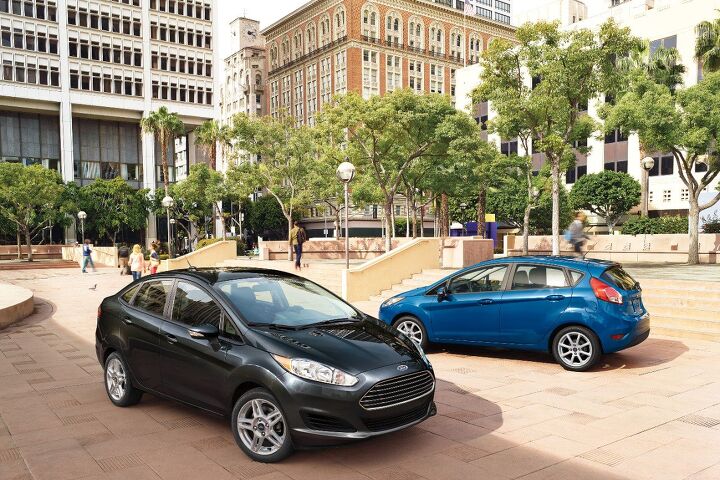


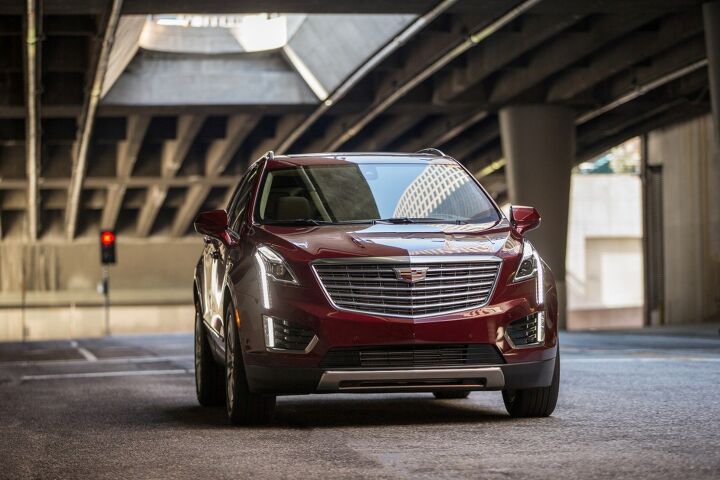
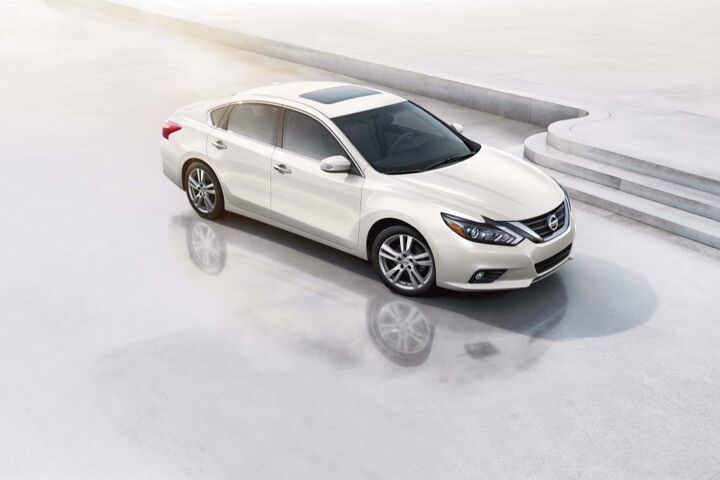

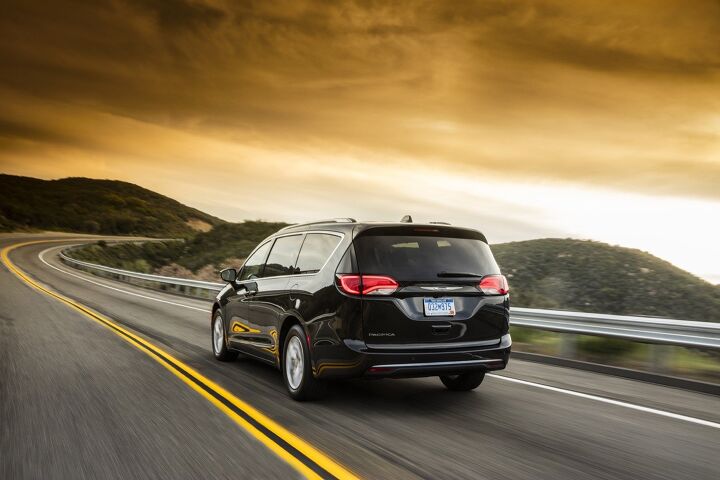

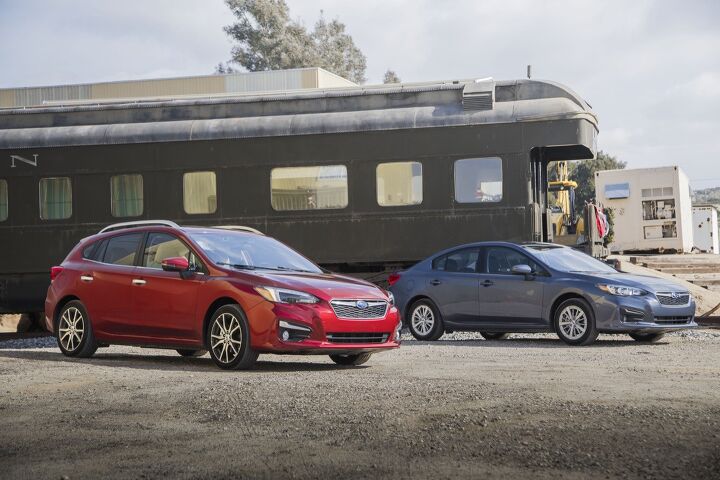
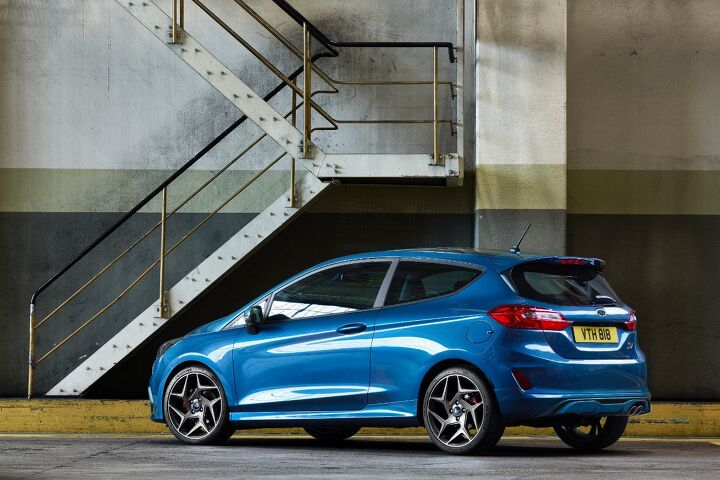

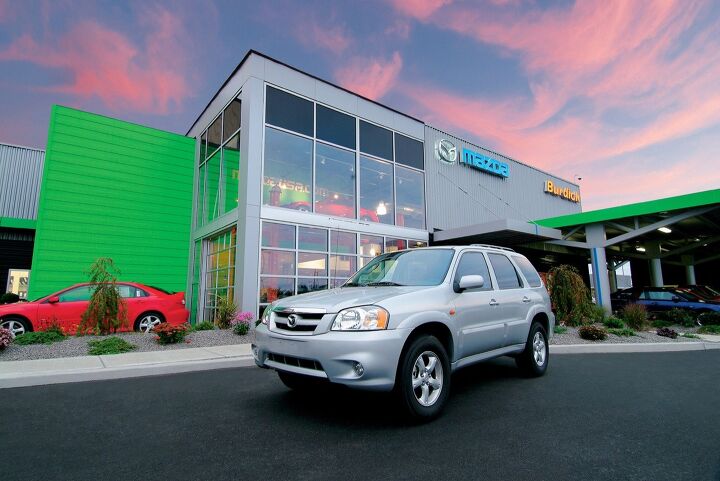
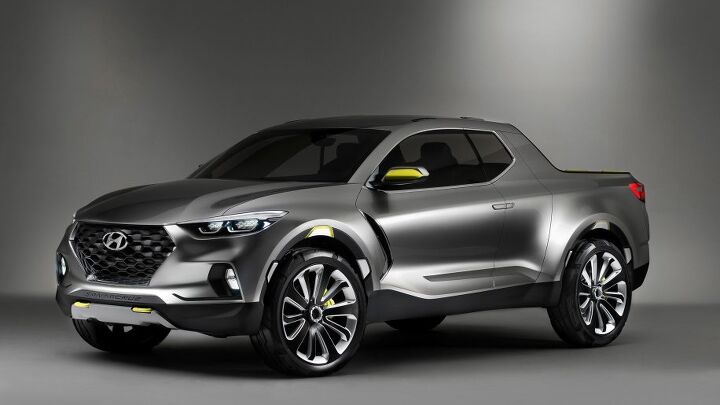
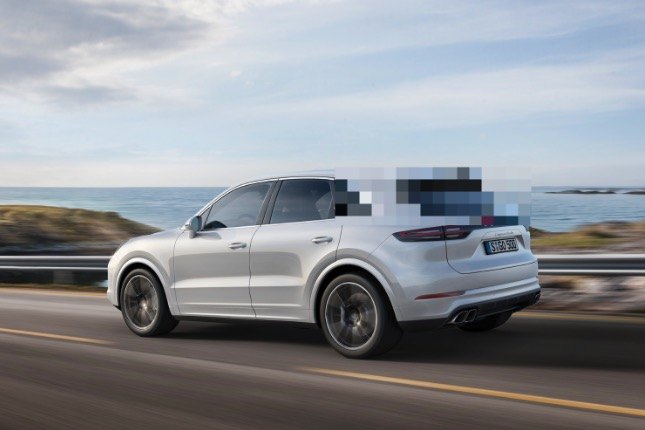
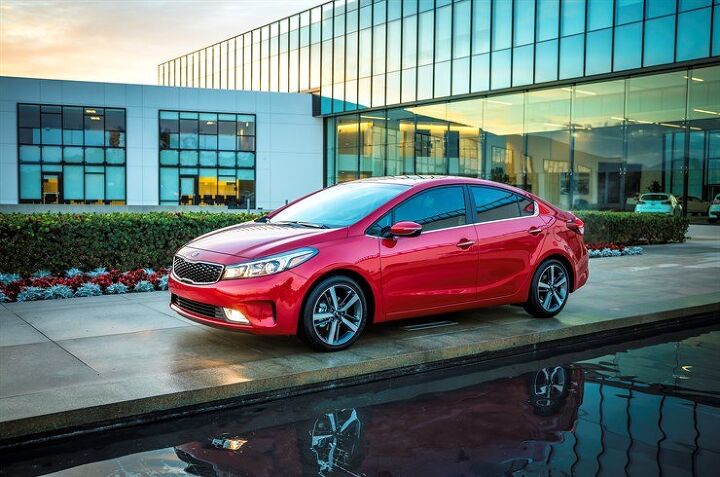

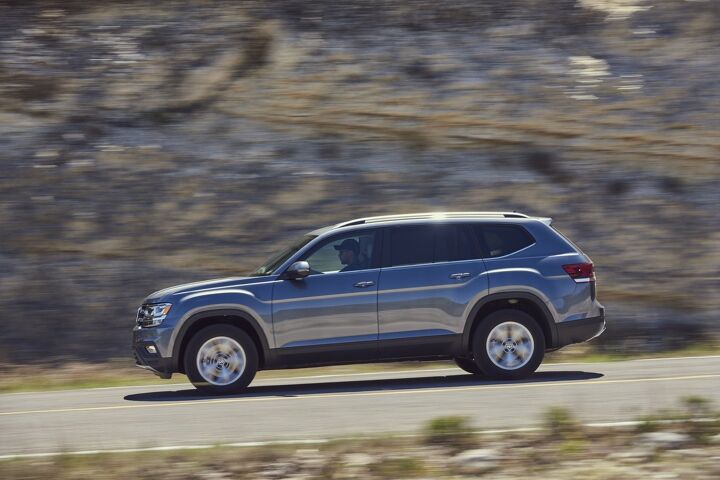




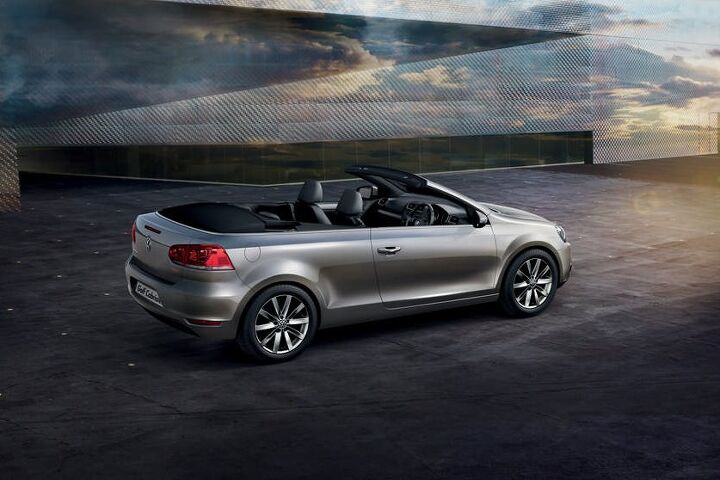
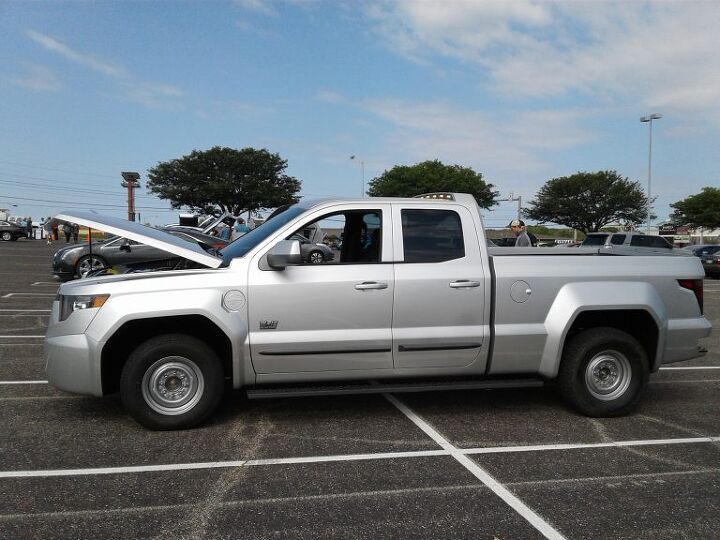

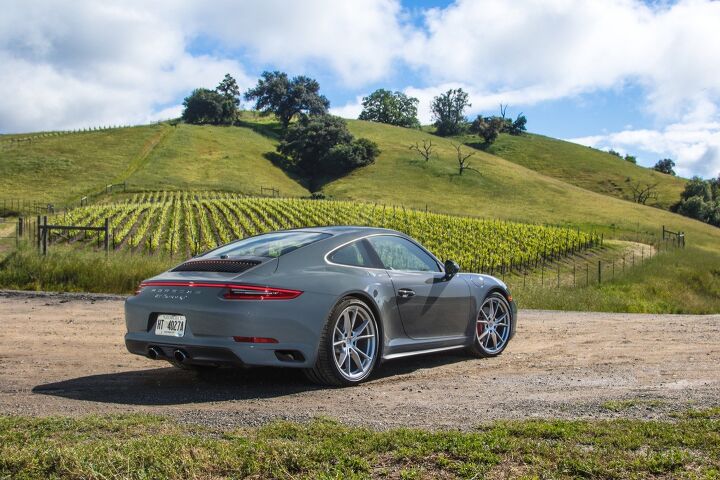
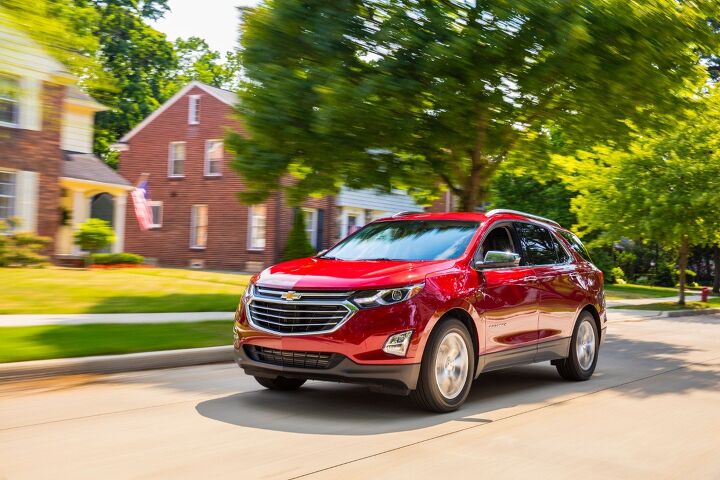


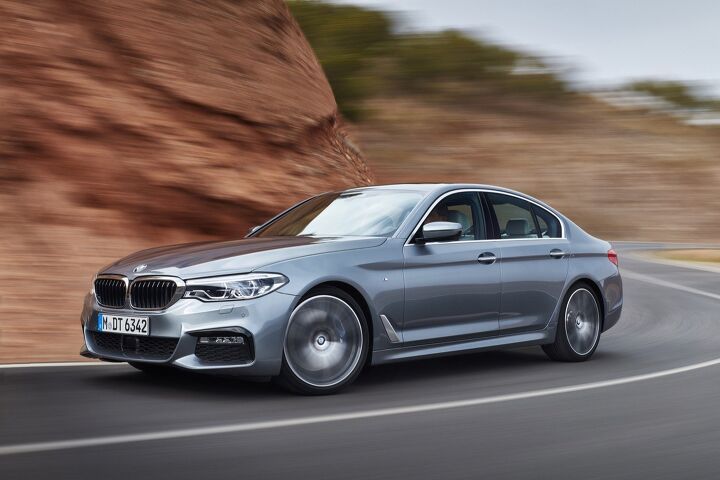

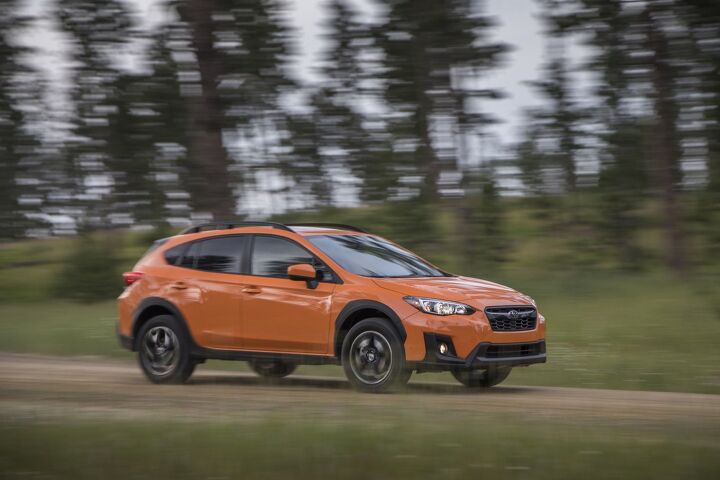
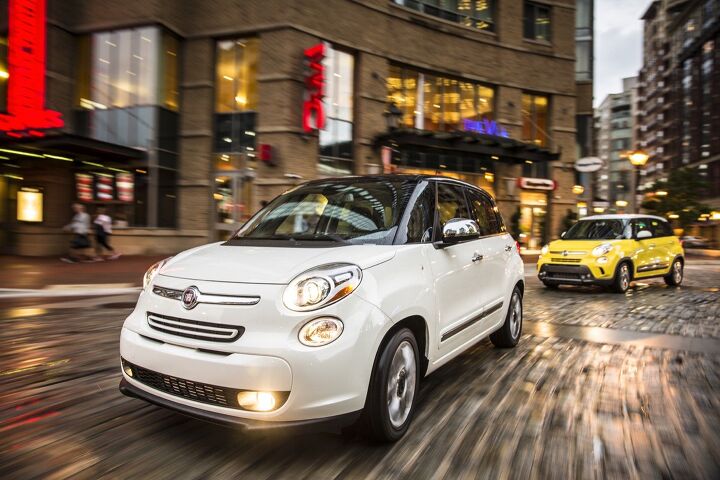


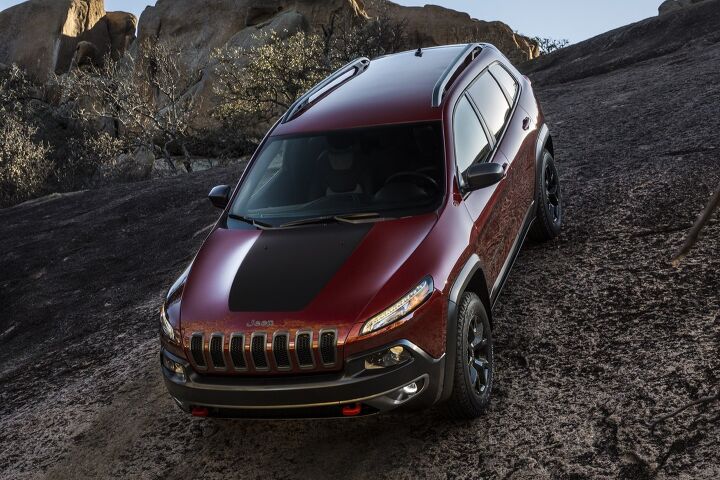
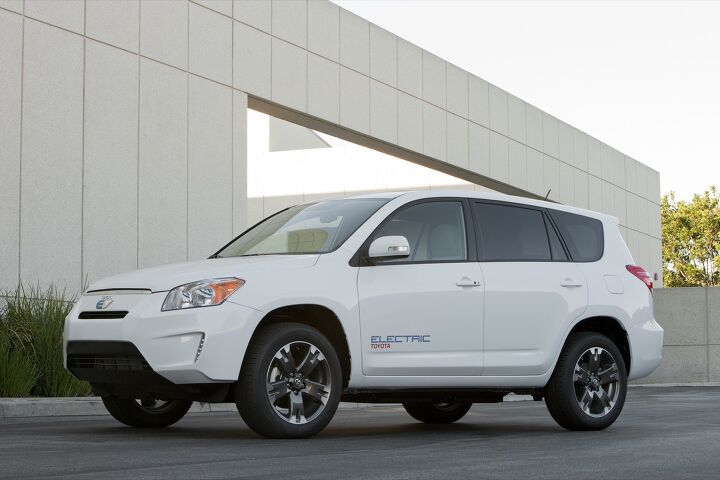

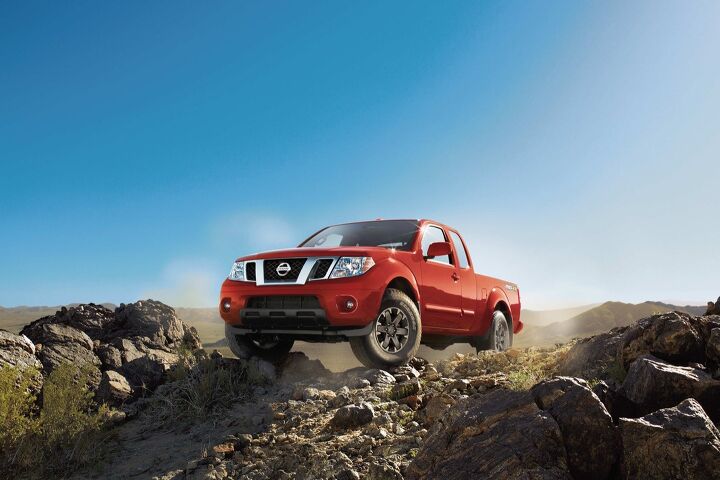






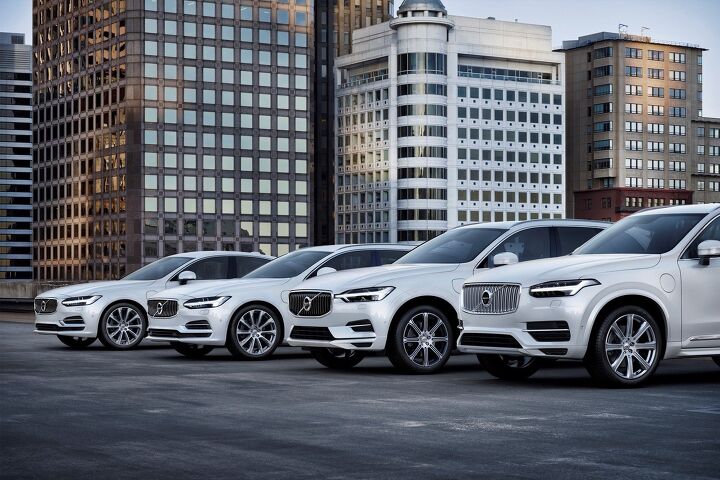

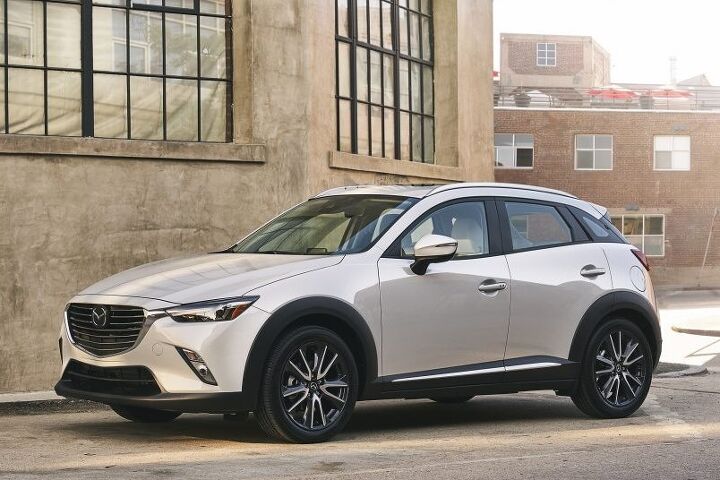






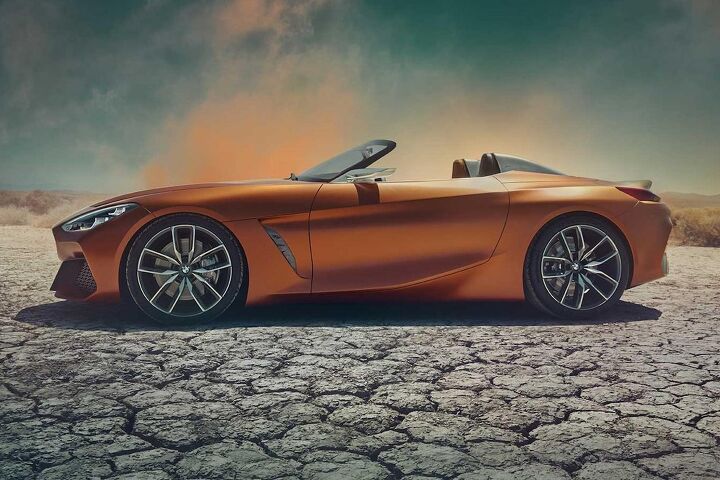
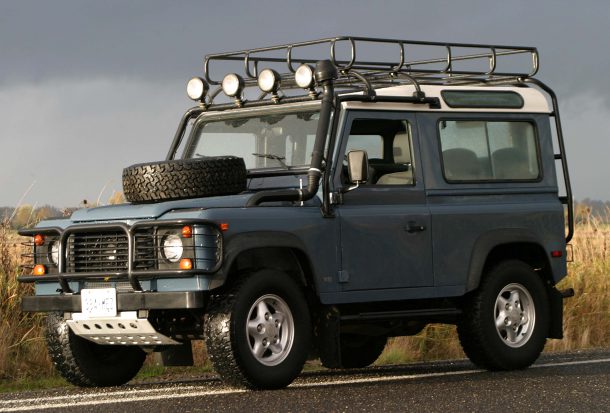













Recent Comments